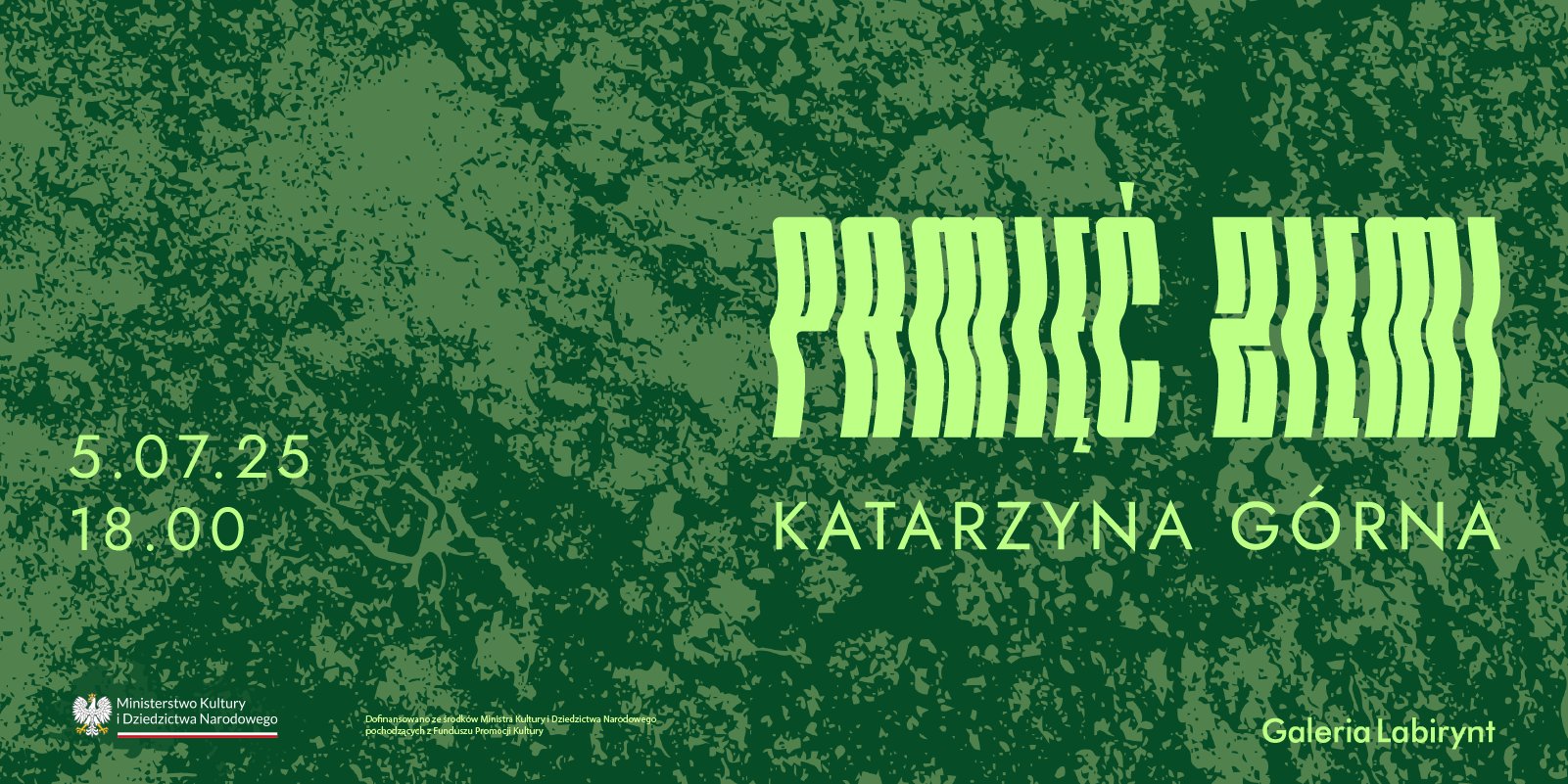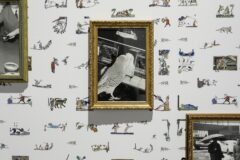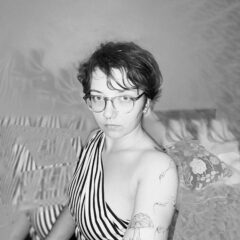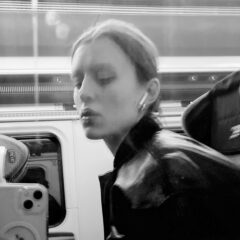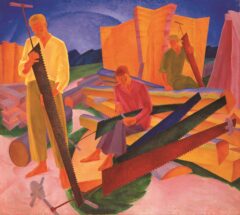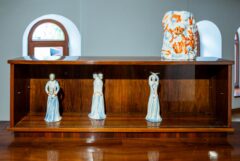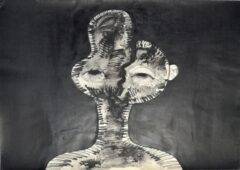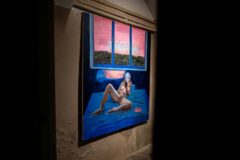„Przyjaźni moc” w galerii lokal_30
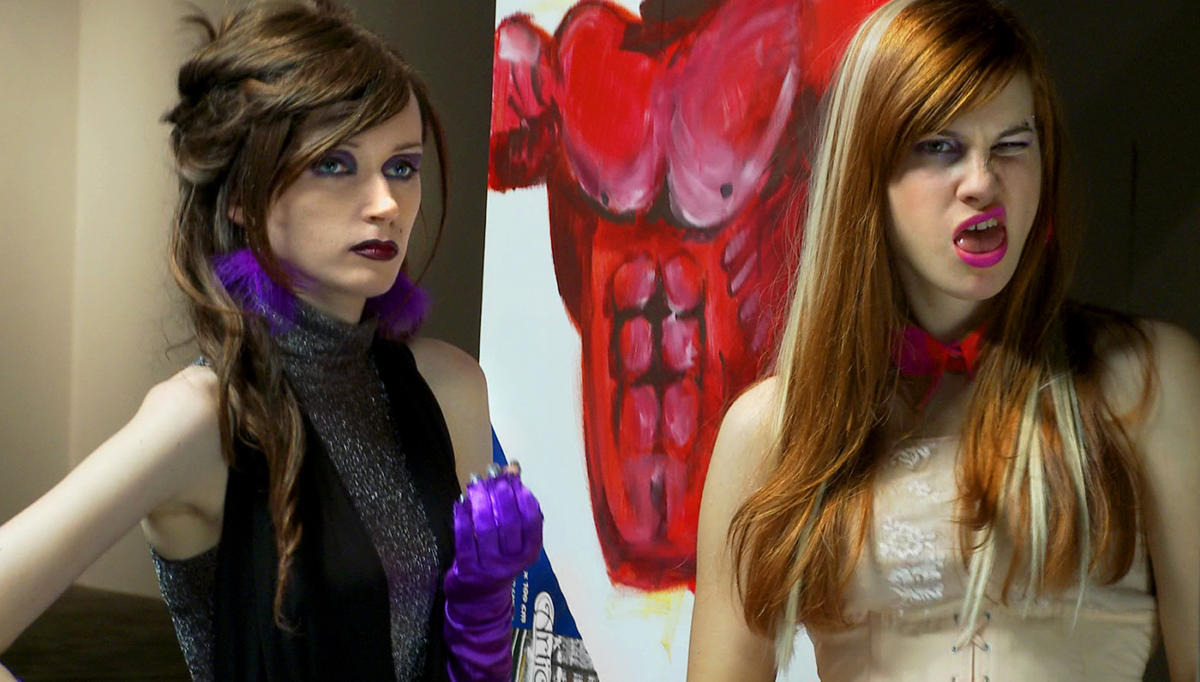
One week before their performance at the Cracow festival Women’s Day, where the group Sędzia Główny was invited, Karolina Wiktor fell ill with chickenpox. Her absence determined the final form of the performance. Acting under an impulse, the artists decided to demonstrate a gesture of Aleksandra Kubiak’s solidarity with her artistic partner Karolina – Kubiak was piercing her body with needles that ended with rose flowers, sticking them in points analogous to Karolina’s blisters, which the latter was in turn covering with ointment in a video record. That was Chapter XX – a work devoted to sisterhood, a unique relationship and mutual dependence between the two artists. It demonstrates the mysticism of friendship, which permeated their common artistic work.
The exhibition The Power of Friendship is devoted to that mysterious and liberating energy of friendship, and its mutual permeation with artistic practice. The presented selection of archival materials of now defunct artistic groups who operated during the last dozen years. All the groups were formed during studies at art academies and departments in Zielona Góra (Grupa Sędzia Główny), Poznań (Virgin$ Deluxe Edition) and Szczecin (Threesome).
Friendship can be seen as a permanent process at the intersection of life and art; intensive relations within each of the groups, and a common experience of the world in everyday life. Thus, artistic projects emerge as a resultant of such common experience.
The uniqueness and autonomy of each of the relations also contributed to shaping original artistic languages. The artists employed various performative strategies, which were closely connected with the viewers – their gaze, but also their participation. In their practices, they appropriated and transformed cultural models of the bodily, embracing non-normative identities, aesthetics and discourses. The struggle for subjectivity at the level of the body, seizing power over the body and one’s own image took its course within, and by necessity also in relation, to institutional structures in which the artists functioned.
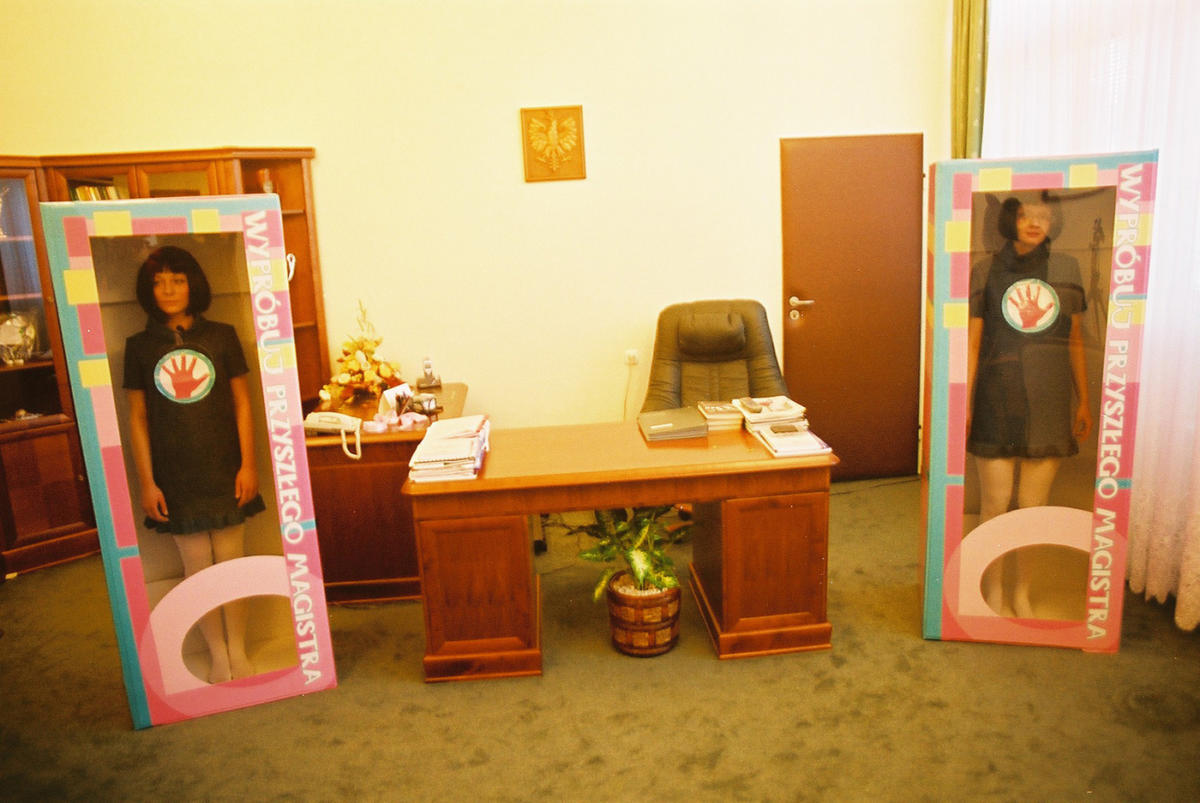



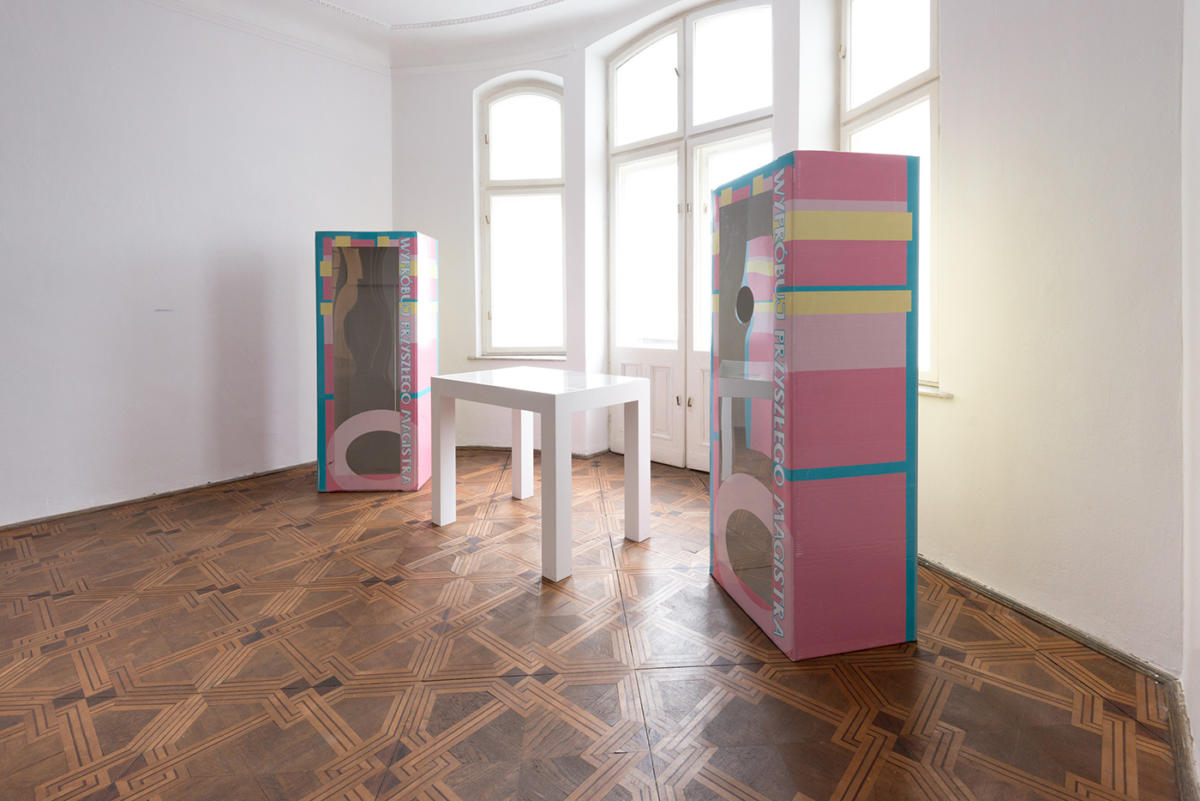

Group activity throws the status quo of the system of academic artistic production into question, proposing instead a different economy of creating and sharing. A good example of such transgression is the diploma work by Aleksandra Kubiak and Karolina Wiktor – Test the Future MFA at the Art Department of the University of Zielona Góra in 2004. Against valid regulations, the artists managed to present and defend a joint diploma as Grupa Sędzia Główny, thus winning with bureaucracy and convincing conservative decision-makers to their idea. Already at that time, the duo was widely recognised and esteemed – the artists received invitations to participate in exhibitions and perform at galleries and festivals. With time, their work entered the canon of the art of the 21st century. The ever more lofty image of the group compelled its members to carry out the series of performances Beznadziejnik (a neologism that may be roughly translated as Diary of Hopelessness), in which they mocked artistic strategies and the art market, the elaborate aesthetics of performance art, as well as their own selves. In the cycle, they returned to their never implemented absurd ideas. One of them was a ridiculous photo shoot The Artist Upside Down, which took place in 2008 in Białystok. The perverse performance demonstrated the joy of creative work as well as the sense of humour and absurdity that characterises every friendship – this sense is prominent in the work of all the groups featured in the exhibition.
Resistance to academic standards was not always articulated in a straightforward way – it also manifested itself in the pursuit of a different creative paradigm, at odds with expectations. Aneta Ptak-Rufino and Ada Karczmarczyk from the group Virgin$ Deluxe Edition say that their activities were motivated by their need to undermine the ossified academic conventions. At the time, students were expected to adopt a rational conceptual approach and focus on important questions, whereas the artists responded with the extremely irrational embarrassing art of Virgin$, in which contact with the viewers became more important than conveying one’s own ideas. Marija Hysterija and Alexis Anorexis, the characters played by the artists within the VDE projects, were exaggerated figures that oozed eroticism and kitsch. They were self-confident stars, akin to what the two artists wanted to be. They tried to make that dream come true by reaching out to the audience in their numerous performances outside the art circles, by making their work freely available online and participating in television talent shows.

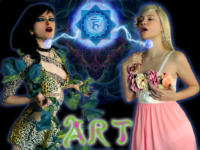
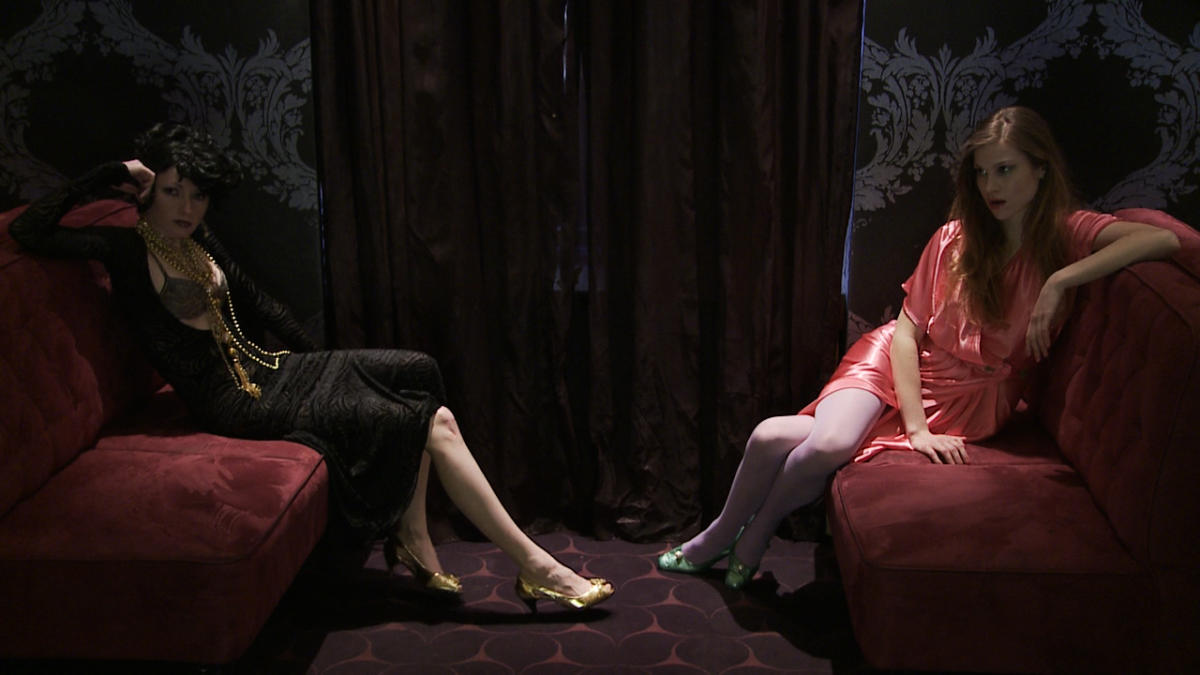
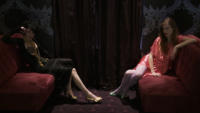
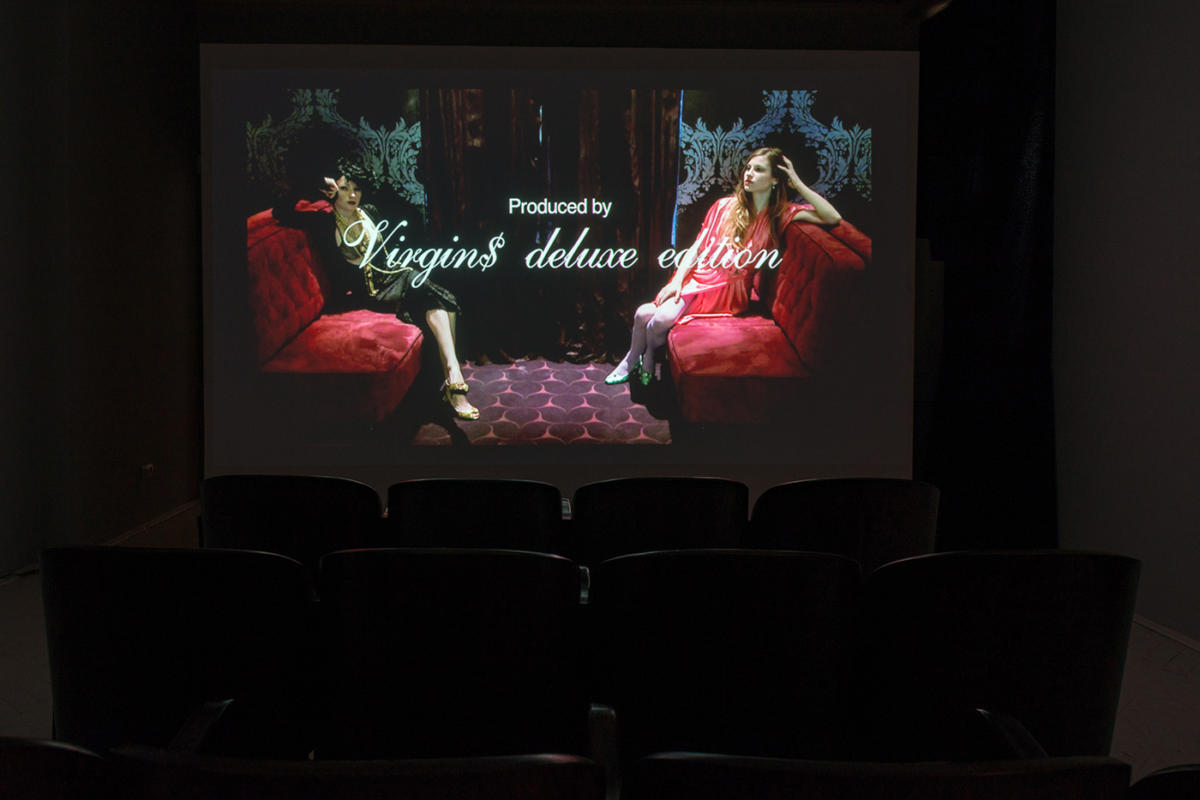
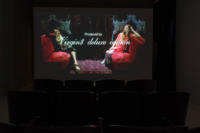

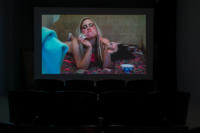
The Internet allowed the band Cipedrapskuad to achieve an ersatz of such stardom. Their first two songs released in 2012 on Soundcloud soon went viral and gained the group many fans. The online and image performance of Cipedrapskuad shot the band into fame in the artistic circles. Uncompromising hip-hop razzmatazz was mixed here with feminist-nationalist content. Cipedrapskuad are hooligans high on booze and weed, who look at us through their webcam. Yet, before Cipedrapskuad came into being, the first project created together by Maria Toboła and Dominika Olszowy was Summer Colony 2010 / (G)Łupki from the students’ plein air of the Intermedia Department of the Academy in Poznań in the town of Łupki in 2010. The girls met on the train on their way to the plein air and they decided to pierce the stiff upper lip atmosphere of the obligatory outing, which they called a summer colony. They started to play the roles of the coolest girls in the group. Within their total performance that embraced the whole of the plein air, they questioned the rules of living in a group, played tricks on their colleagues and teachers, gossiped about other participants while sitting in their room and illegally smoking cigarettes. (G)Łupki consisted in putting the cat among the pigeons of the academic micro-community; it was also the group’s first performance, which anticipated their later projects.
The last group in the exhibition – Threesome – was formed by Karolina Dryps, Lonia Kaniuk and Karolina Mełnicka at the Art Academy of Szczecin, which was then (2013) a new institution in formation. The group’s actions arose naturally from daily meetings and the need to explore their common interests and topics. Ultimately, the group came to implement their programme postulates of pro-sexual feminism by means of numerous game with the bodily and sexuality, reclaiming these spheres as well as making references to pornography. Their triumph in this field, and the resulting inner power is demonstrated in a perverse way in the artists’ work Valkyrie.
Such power and energy is particularly needed by women, but also by men today when the lyrics of Cipedrapskuad’s rap “Eagle, eagle, eagle’s flying / eagle’s making Polish babies” ring particularly true. Friendship and community built on friendship may become a vital form of resistance to the current crises.
Tomek Pawłowski

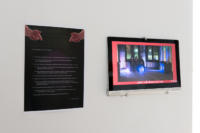

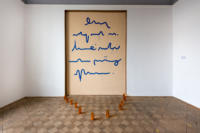
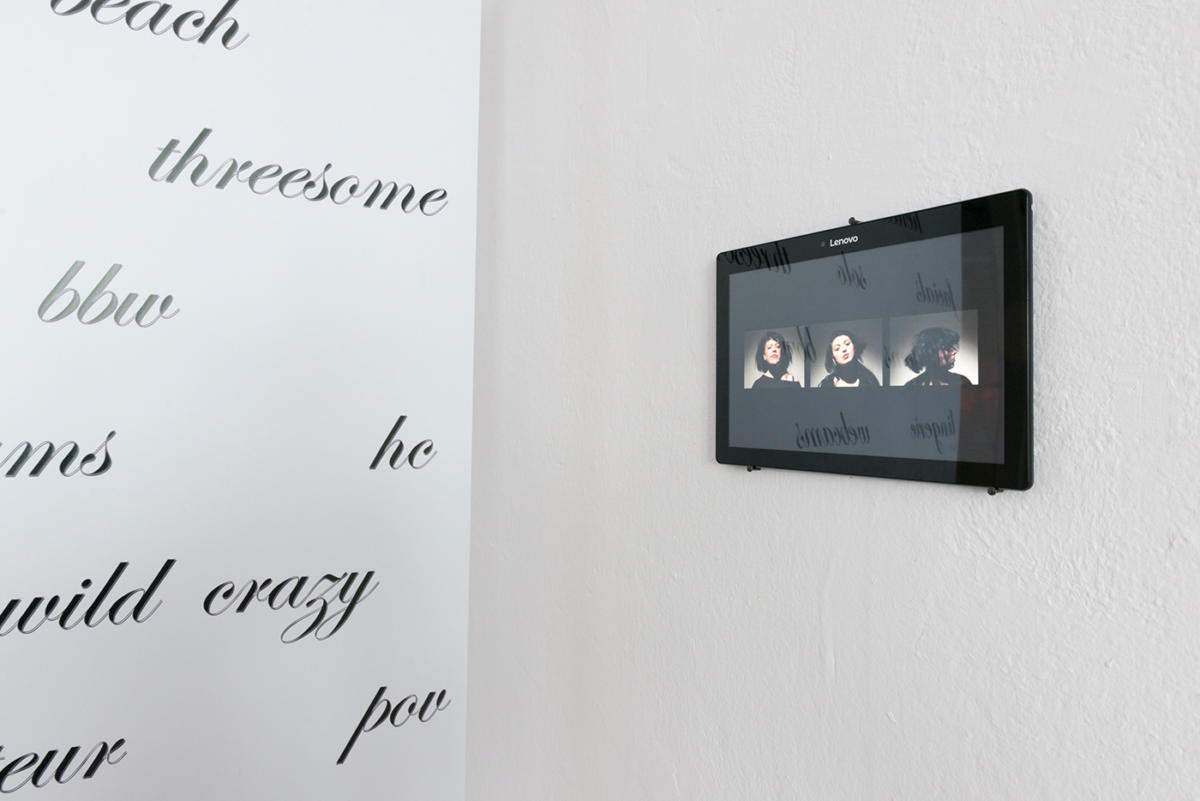

Na tydzień przed występem na krakowskim festiwalu Święto kobiet, Karolina Wiktor z Grupy Sędzia Główny zachorowała na ospę. Jej nieobecność wpłynęła na ostateczny kształt performansu. Pod wpływem impulsu artystki zdecydowały się na gest, poprzez który Aleksandra Kubiak solidaryzuje się z chorobą Karoliny – wbija w swoje ciało igły zakończone kwiatami, w punkty analogiczne do krost Karoliny, które ta smaruje maścią, co widać na rejestracji wideo.
To Rozdział XX – praca traktująca o siostrzeństwie, wyjątkowej relacji i wzajemnej zależności artystek. Pokazuje ona mistykę przyjaźni, która ogarnia ich sztukę.
Wystawa Przyjaźni Moc opowiada o tej tajemniczej, wyzwalającej energii przyjaźni, i przenikaniu się jej z twórczością. Zaprezentowany jest na niej wybór archiwalnych materiałów nieistniejących już grup artystycznych, które działały na przestrzeni ostatnich kilkunastu lat. Wszystkie grupy zawiązały się podczas wspólnego studiowania na akademiach i wydziałach sztuki w Zielonej Górze (Grupa Sędzia Główny), Poznaniu (Virgin$ Deluxe Edition, Cipedrapskuad) i Szczecinie (Threesome).
Przyjaźń – intensywne, bliskie relacje, współprzeżywanie świata w wymiarze codzienności – można postrzegać jako permanentny proces odbywający się na przecięciu życia i sztuki. Artystyczne realizacje stają się w tym kontekście wypadkową takich przeżyć.
Swoistość i autonomia każdej z relacji naturalnie zaowocowały wykształceniem oryginalnych języków wypowiedzi artystycznej. Artystki stosowały różnorodne strategie performatywne, ściśle połączone z odbiorcami – ich spojrzeniem, ale także uczestnictwem. W swoich praktykach zawłaszczały i przekształcały kulturowe wzorce cielesności, włączając w obszar twórczości nienormatywne tożsamości, estetyki oraz języki. Walka o podmiotowość na poziomie ciała, przejęcie władzy nad nim i nad własnym wizerunkiem, odbywała się w ramach i, siłą rzeczy, wobec instytucjonalnych struktur, w których funkcjonowały.
Działalność grupowa kwestionuje status quo systemu akademickiej produkcji artystycznej, proponując inną ekonomię wytwarzania i dzielenia się. Dobrym przykładem takiego przekroczenia jest dyplom Aleksandry Kubiak i Karoliny Wiktor – Wypróbuj przyszłego magistra sztuki, obroniony na Wydziale Sztuki Uniwersytetu Zielonogórskiego w 2004 roku. Wbrew przyjętym regułom, artystkom udało się zaprezentować przed komisją i obronić wspólny dyplom jako Grupa Sędzia Główny – pokonać biurokratyczne bariery i przekonać konserwatywnych decydentów. Już wtedy duet był szeroko rozpoznany i zyskał powszechne uznanie – dostawał zaproszenia na wystawy, do występów w galeriach i na festiwalach, a z czasem wpisał się w kanon sztuki XXI wieku. Coraz bardziej uwznioślony wizerunek grupy skłonił artystki do zrealizowania w ostatnim okresie twórczości Beznadziejników –serii performansów, w których wyśmiewają się ze strategii i rynku sztuki, wypracowanej estetyki performance art, a także z samych siebie. W ramach Beznadziejników biorą na warsztat absurdalne, niezrealizowane pomysły. Jednym z nich jest kuriozalna sesja zdjęciowa Artystka na głowie, która odbyła się w 2008 roku w Białymstoku. Przewrotna akcja pokazuje radość tworzenia oraz swoiste dla każdej przyjaźni poczucie humoru i absurdu – silnie obecne w twórczości wszystkich grup pokazywanych na wystawie.
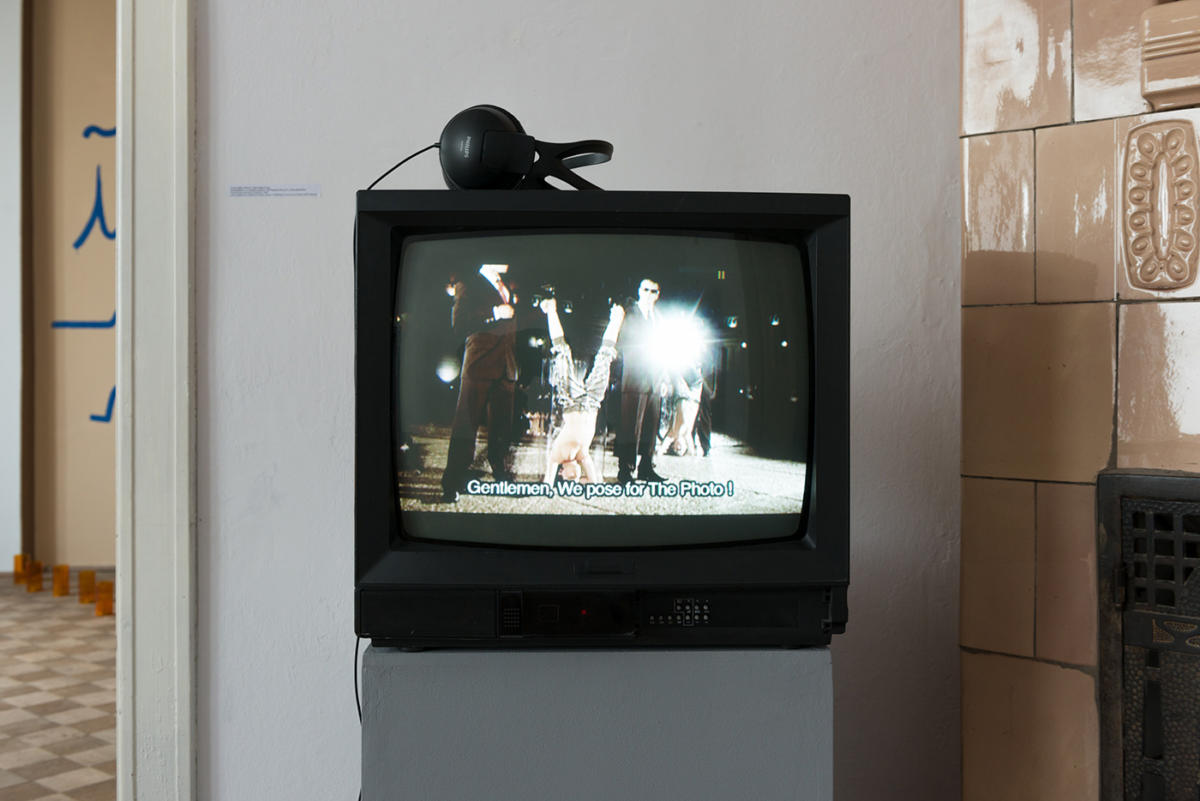
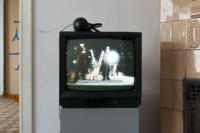
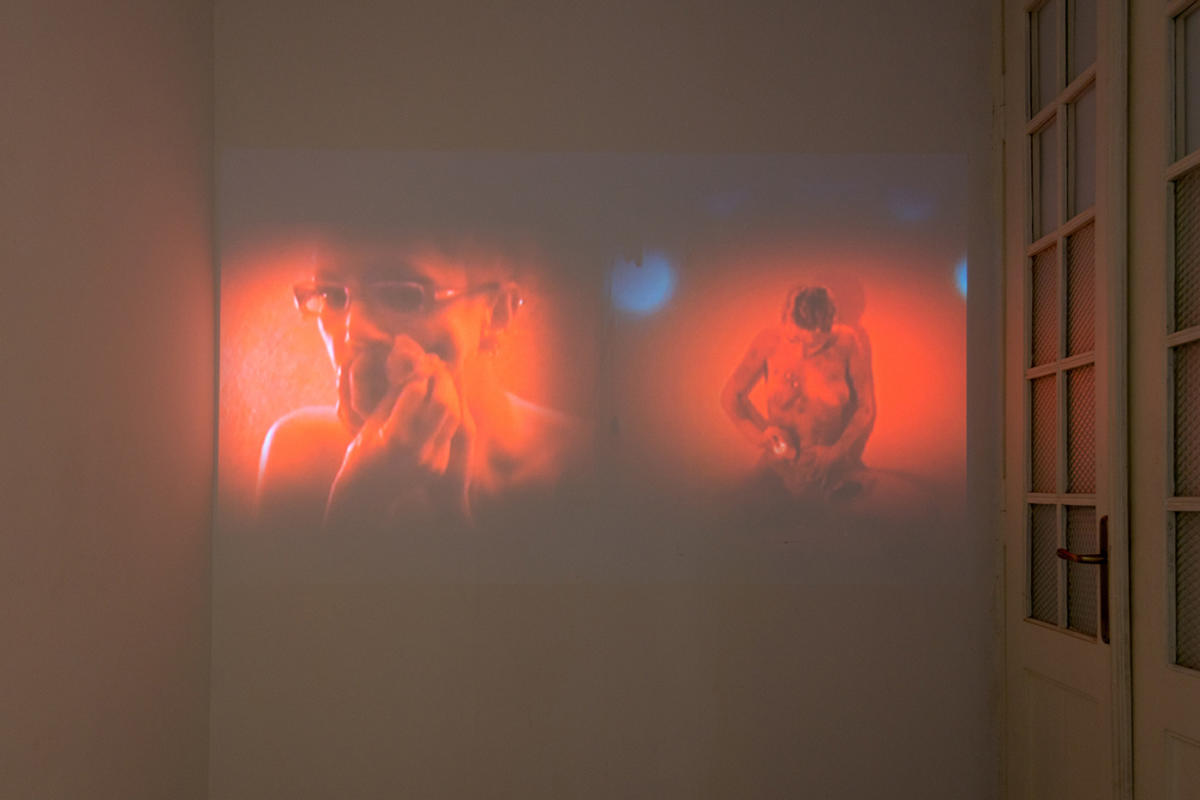
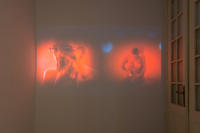
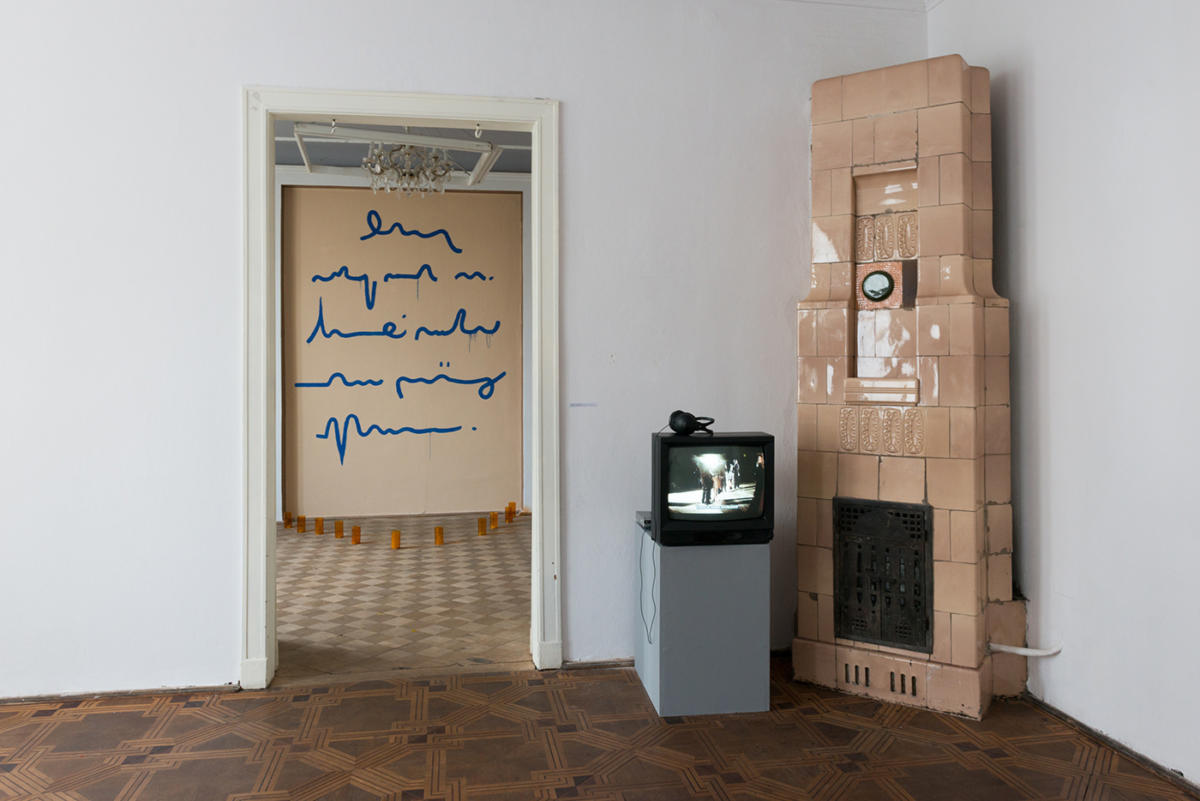
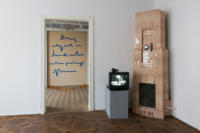
Opór wobec akademickich standardów nie zawsze był artykułowany wprost w przypadku reszty grup- objawiał się również w realizowaniu innego paradygmatu twórczego, w kontrze do uczelnianych oczekiwań. Jak mówią Aneta Ptak-Rufino i Ada Karczmarczyk z grupy Virgin$ Deluxe Edition, ich działania wynikały z potrzeby podważenia akademickich konwencji. Od studentów oczekiwano wówczas racjonalnego, konceptualnego podejścia, podejmowania ważnych tematów. Odpowiedzią na to stała się skrajnie irracjonalna, żenująca sztuka Virgin$, w której najistotniejsza nie była emanacja własnej idei, a kontakt z publicznością. Marija Hysterija i Alexis Anorexis, w które artystki wcielały się w ramach VDE, to postaci przerysowane, ociekające radykalną erotyką i chamskim kiczem. Pewne siebie gwiazdy – bo takie też było marzenie artystek. Realizowały je poprzez wychodzenie do publiczności – liczne występy w pozaartystycznych środowiskach, udostępnianie twórczości na otwartych licencjach w Internecie, czy udział w telewizyjnych talent shows.
Namiastkę takiej popularności udało się, właśnie dzięki Internetowi, zdobyć również zespołowi Cipedrapskuad. Pierwsze dwie piosenki opublikowane przez raperki w 2012 roku na portalu soundcloud bardzo szybko stały się viralem, zjednując sobie rzeszę fanów. Internetowy i wizerunkowy performans grupy stał się źródłem szerokiego fejmu Cipedrapskuad. Bezkompromisowy, hiphopowy blichtr mieszał się tu z feministyczno-patriotycznymi treściami. Cipedrapskuad to chuliganki pijące browary i palące blanty, które spoglądają na nas siedząc przed swoją internetową kamerką.
Zanim jednak powstało Cipedrapskuad, pierwszą wspólną realizacją Marii Toboły i Dominiki Olszowy był film Kolonia karna / (g)Łupki, który powstał w 2010 roku na studenckim plenerze Katedry Intermediów poznańskiej akademii w miejscowości Łupki. Dziewczyny poznały się w pociągu jadąc razem na plener. Postanowiły wtedy przełamać sztywną atmosferę obowiązkowego wyjazdu, który nazwały koloniami. Wcieliły się w rolę najfajniejszych dziewczyn w grupie. W ramach totalnego, obejmującego cały plener performansu bezczelnie terroryzowały kolonie. Podważały zasady współżycia w ramach grupy, robiły psikusy kolegom, koleżankom i kadrze, siedząc w pokoju i nielegalnie paląc papierosy obgadywały uczestników pleneru. (G)Łupki to kij w mrowisko akademickiej mikrospołeczności i pierwszy wspólny performans artystek zapowiadający późniejsze realizacje.

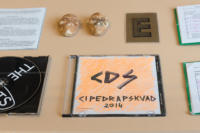
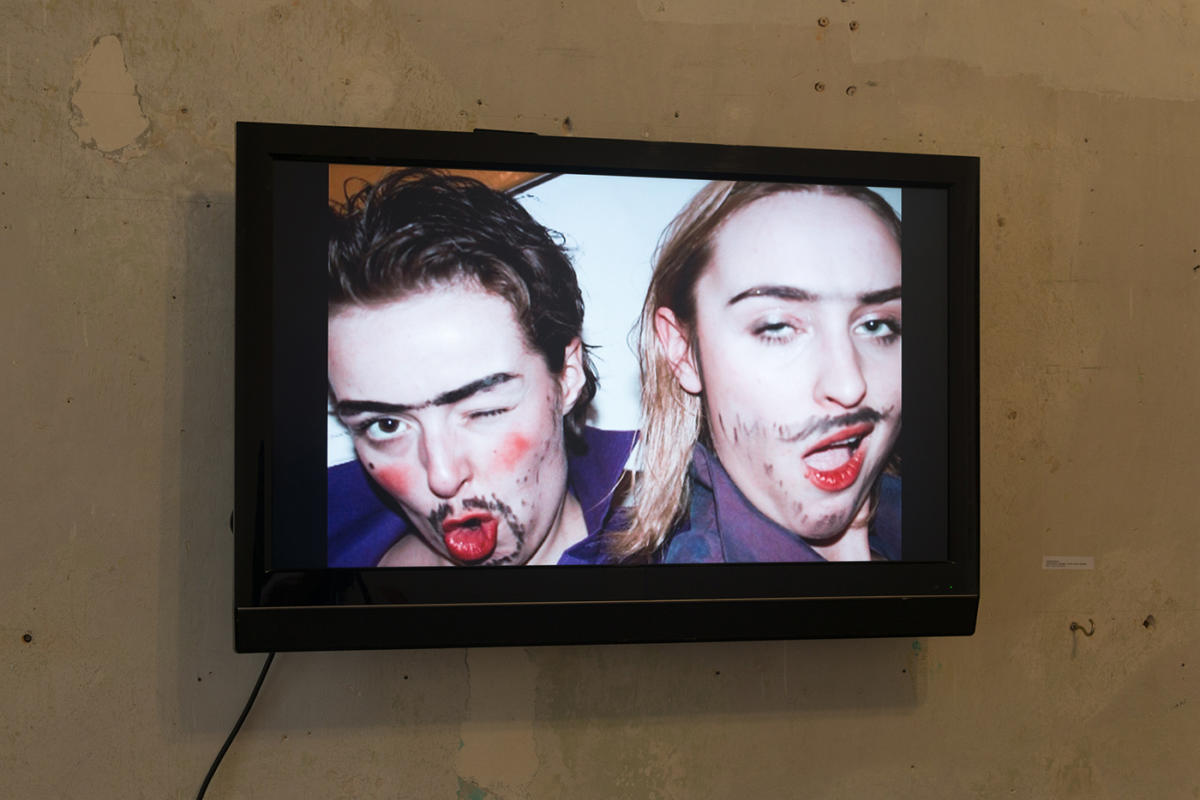

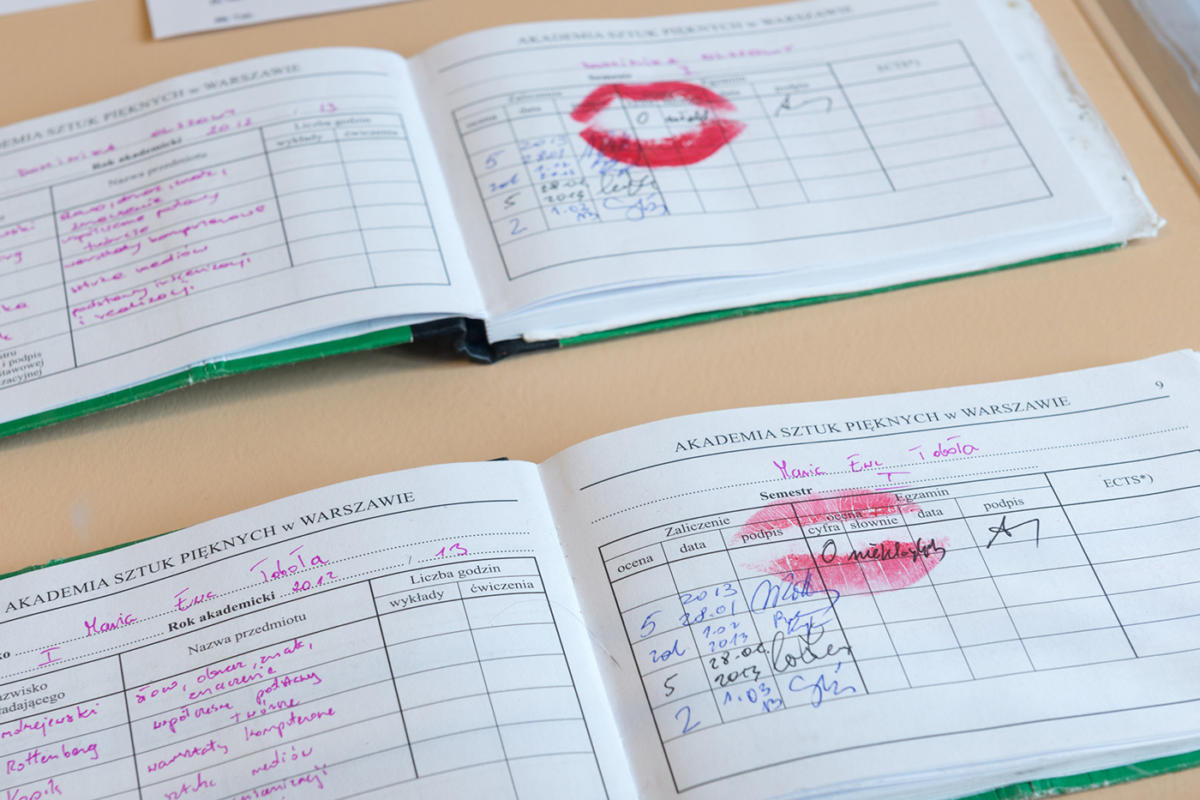
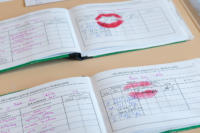

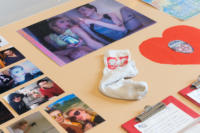

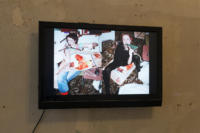
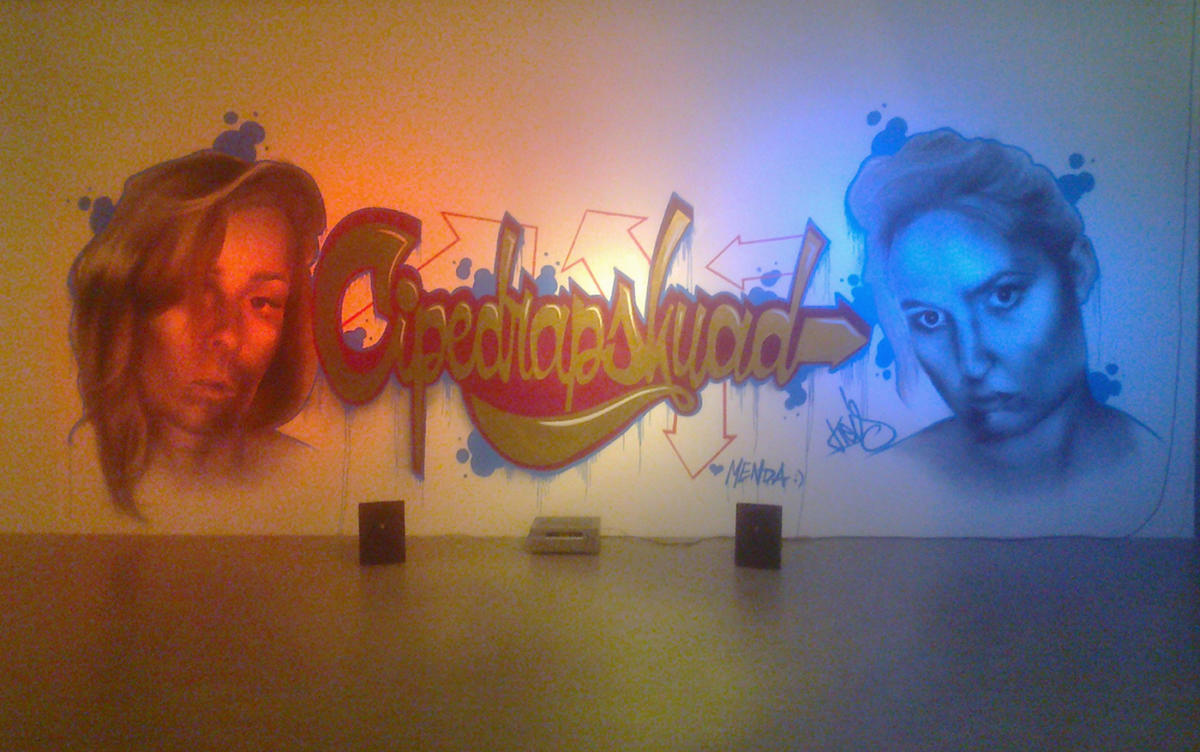
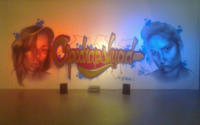
Ostatnia pokazywana na wystawie grupa – Threesome, założona przez Karolinę Dryps, Lonię Kaniuk i Karolinę Mełnicką w 2013 roku, działała na Akademii Sztuki w Szczecinie, tworzącej się wtedy nowej instytucji. Ich wspólne działania zrodziły się w sposób naturalny – z codziennych spotkań i potrzeby podejmowania wspólnych zainteresowań oraz tematów. Grupa Threesome realizowała programowo postulaty feminizmu proseksualnego. Objawiało się to eksplorowaniem obszaru cielesności i seksualności – odzyskiwaniem ich, a także czerpaniem z pornografii. Triumf na tym polu i wynikającą z niego wewnętrzną siłę w przewrotny sposób artystki pokazują w obrazie wideo Walkirie.

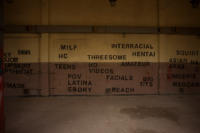
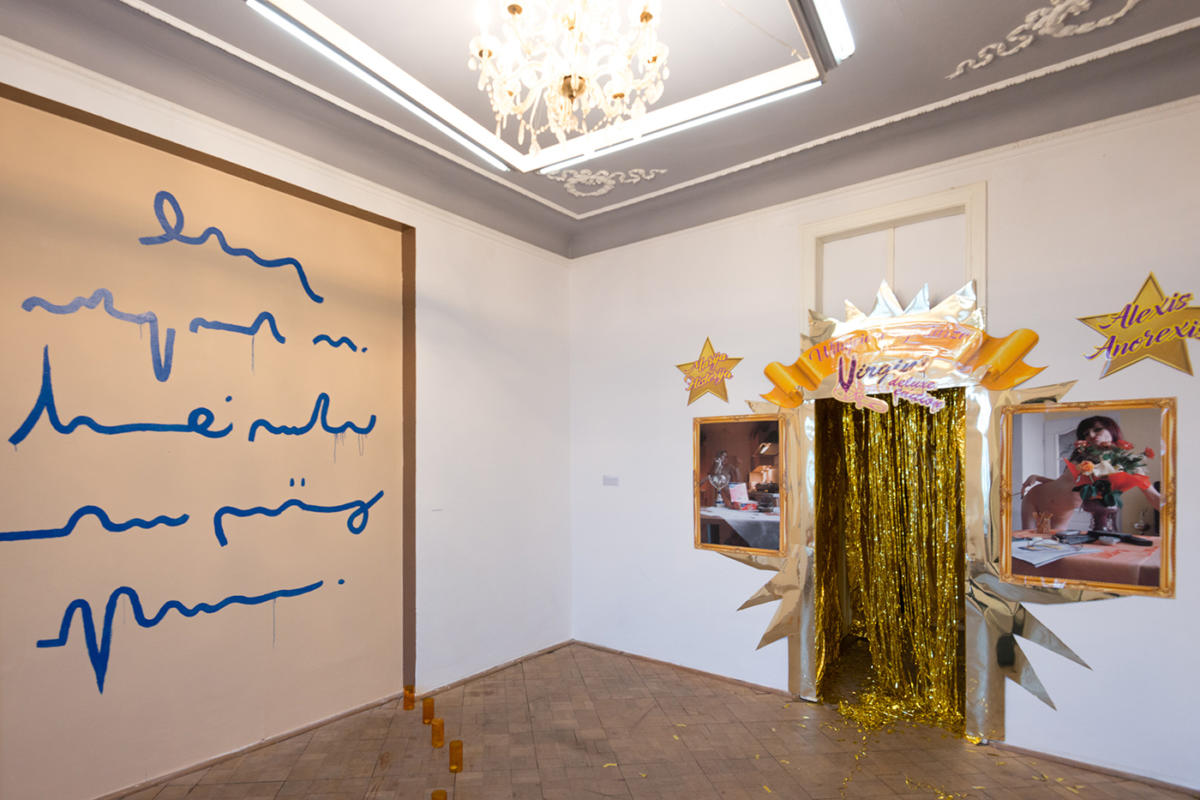




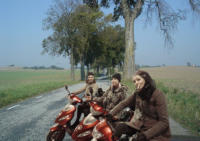
Takiej siły i energii szczególnie potrzeba kobietom, ale także mężczyznom dzisiaj, kiedy słowa rapowane przez Cipedrapskuad Orzeł, orzeł, orzeł leci / orzeł robi polskie dzieci brzmią nadzwyczaj aktualnie. Nadzieją na przełamanie obecnych kryzysów może być właśnie Przyjaźń jako istotna forma oporu wobec licznych opresji.
Tomek Pawłowski
Przypisy
Stopka
- Osoby artystyczne
- Cipedrapskuad (Dominika Olszowy, Maria Toboła), Grupa Sędzia Główny (Aleksandra Kubiak, Karolina Wiktor), Threesome (Karolina Dryps, Lonia Kaniuk, Karolina Mełnicka), Virgin$ deLuxe Edition (Ada Karczmarczyk, Aneta Ptak-Rufino)
- Wystawa
- Przyjaźni moc
- Miejsce
- lokal_30
- Czas trwania
- 03.03-29.04.2017
- Osoba kuratorska
- Tomek Pawłowski
- Strona internetowa
- lokal30.pl

